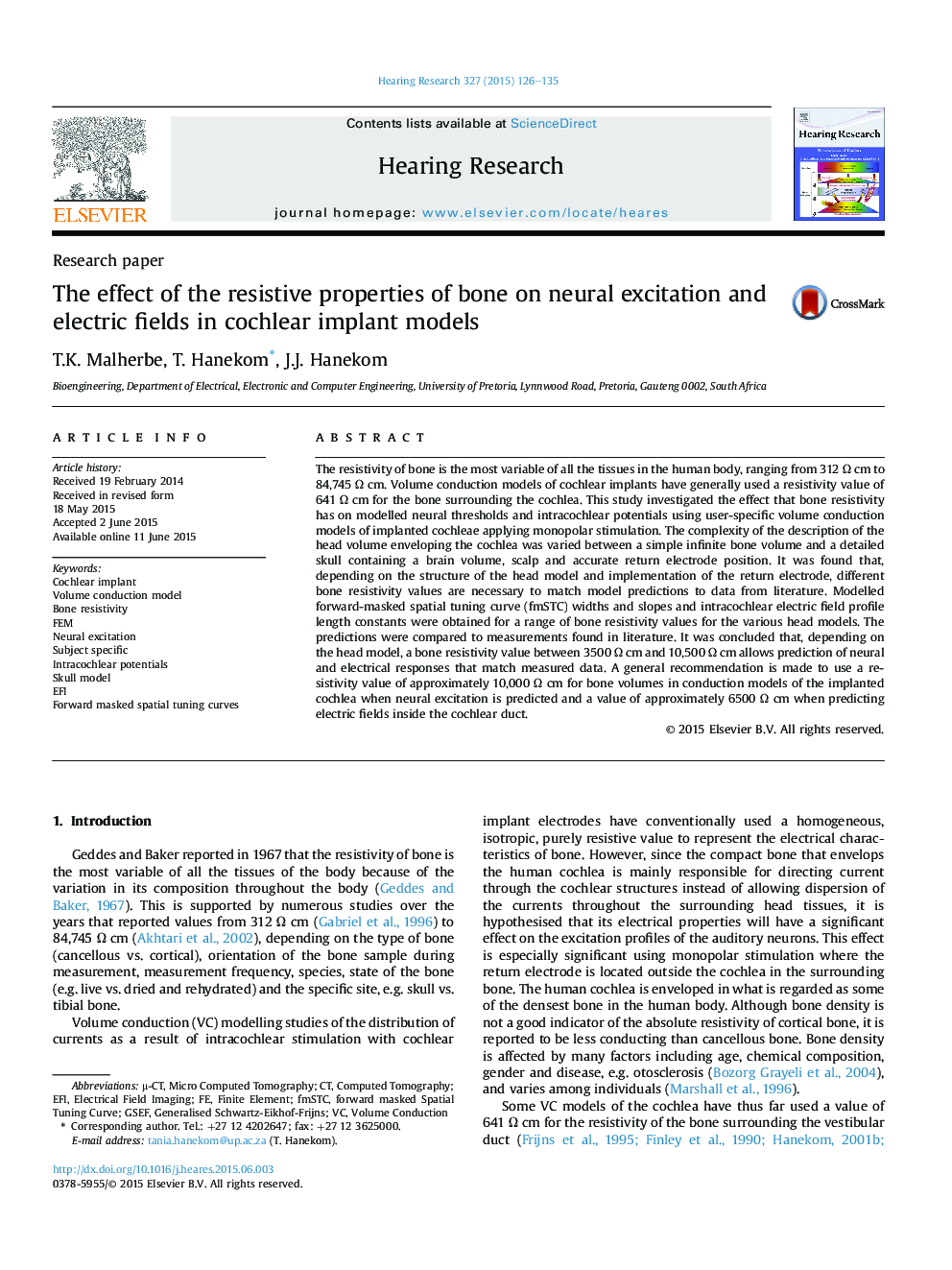| کد مقاله | کد نشریه | سال انتشار | مقاله انگلیسی | نسخه تمام متن |
|---|---|---|---|---|
| 6287318 | 1615573 | 2015 | 10 صفحه PDF | دانلود رایگان |
- User specific volume conduction (VC) models of human cochleae are constructed.
- Effect of the resistivity of the surrounding bone on neural excitation is examined.
- Recommendations of bone resistivity values to use in cochlear VC models are made.
- A bone resistivity of 10,000 Ohm cm is recommended for predicting excitation spread.
- A bone resistivity of 6500 Ohm cm is recommended for predicting intracochlear potentials.
The resistivity of bone is the most variable of all the tissues in the human body, ranging from 312 Ω cm to 84,745 Ω cm. Volume conduction models of cochlear implants have generally used a resistivity value of 641 Ω cm for the bone surrounding the cochlea. This study investigated the effect that bone resistivity has on modelled neural thresholds and intracochlear potentials using user-specific volume conduction models of implanted cochleae applying monopolar stimulation. The complexity of the description of the head volume enveloping the cochlea was varied between a simple infinite bone volume and a detailed skull containing a brain volume, scalp and accurate return electrode position. It was found that, depending on the structure of the head model and implementation of the return electrode, different bone resistivity values are necessary to match model predictions to data from literature. Modelled forward-masked spatial tuning curve (fmSTC) widths and slopes and intracochlear electric field profile length constants were obtained for a range of bone resistivity values for the various head models. The predictions were compared to measurements found in literature. It was concluded that, depending on the head model, a bone resistivity value between 3500 Ω cm and 10,500 Ω cm allows prediction of neural and electrical responses that match measured data. A general recommendation is made to use a resistivity value of approximately 10,000 Ω cm for bone volumes in conduction models of the implanted cochlea when neural excitation is predicted and a value of approximately 6500 Ω cm when predicting electric fields inside the cochlear duct.
Journal: Hearing Research - Volume 327, September 2015, Pages 126-135
